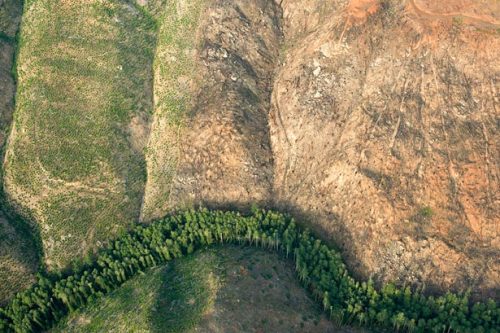
Rep. Peter DeFazio says the plan for more than 2 million acres of Oregon’s O&C forestlands (named for the Oregon and California Railroad) that he devised with fellow Democrat Rep. Kurt Schrader and Republican Rep. Greg Walden solves 30 years of gridlock over logging in Oregon’s federal forests. The bill proposes to divide the forestlands between a conservation trust and timber trust.
The so-called DeFazio bill — the O&C Trust, Conservation, and Jobs Act — passed the Republican-controlled House as part of a larger, equally controversial nationwide forest bill that would dramatically increase logging on Forest Service lands across the country. Now everyone is waiting for Sen. Ron Wyden, who chairs the Senate Energy and Natural Resources Committee, to introduce his version of the legislation. Wyden’s staff has expressed concern with sections of the House bill that undermine federal environmental laws and that turn large swaths of federal land over to private ownership. He has also reportedly had issues with the trust concept in the House version of the bill.
What are the O&C Lands?
The “O&C lands” were originally granted to the Oregon and California Railroad Company by the federal government in the 1860s to sell to pay for railroad construction and encourage settlement. The government took back the land in 1916 when the private railroads began selling off the land as timber and corruption was rampant. The land eventually became mainly BLM and, to a lesser extent, Forest Service land — publicly owned federal lands.
The 1937 O&C Act called for “timber to be sold, cut and removed in conformity with the principle of sustained yield for the purpose of providing a permanent source of timber supply, protecting watersheds, regulating stream flow and contributing to the economic stability of local communities and industries and providing recreational facilities.”
Though the language calls for protecting watersheds, providing recreation and other uses, the focus has been on logging. The definition of “sustained yield” depends on whether you are talking to the timber industry or a conservationist. The lands were logged for decades to provide the 18 O&C counties (including Lane) with timber revenues. In 2000, after logging decreased — along with wildlife and old growth on the lands — and the Secure Rural Schools Act (SRS) was passed in Congress to provide direct payment to counties from the federal government, in lieu of taxes, decoupling the lands from county funding. That funding has been shrinking and is likely to end soon. On Sept. 25 the House passed a temporary one-year extension of SRS payments.
The ‘Benefits’ of the O&C Trust Bill
According to Congressman Peter DeFazio’s September newsletter, the “bipartisan O&C bill” will protect the last remaining mature and old-growth forests on O&C lands, designate 130 river miles as wild and scenic, add 90,000 acres of new wilderness and protect an additional 300,000 acres of streams, rivers, ponds and wetlands.
Economically, DeFazio says the bill will create thousands of private sector jobs, prohibit the export of raw logs to keep the milling here in Oregon, provide revenue to county governments to keep criminals in jail, teachers in classrooms and sheriffs on the roads, and it would save the federal government $1 billion over 10 years.
The bill would place 1.67 million acres of the public O&C lands — including thousands of acres of older forests up to 125 years old, according to Oregon Wild — into a “fiduciary trust” that would be managed to maximize logging revenues for the benefit of counties. These lands would be managed under the Oregon Forest Practices Act, which governs private industrial timberlands in Oregon.
The remaining forestlands would be transferred to the U.S. Forest Service to manage and be given some protections.
130 miles of river designated as Wild and Scenic
1.67 million acres of public lands to be managed under the Oregon Forest Practices Act to maximize logging revenues
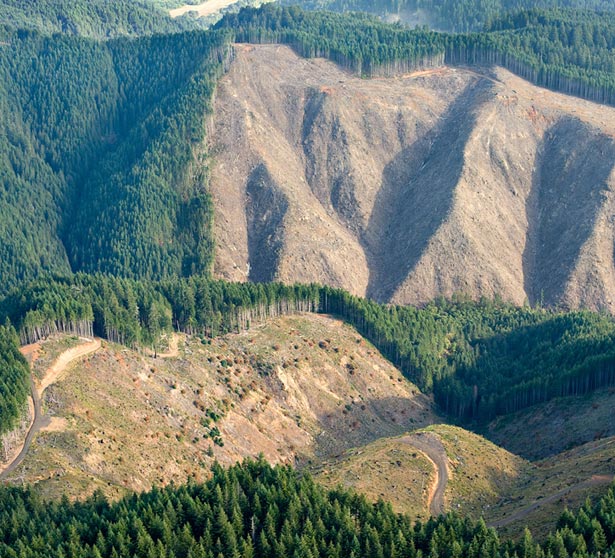
Why Conservationists Don’t Like the O&C Trust Bill
Conservationists say that while the O&C bill might protect 100,000 acres of federal Wilderness and Wild and Scenic Rivers, it sacrifices 1.67 million acres to the timber trust and fails to protect all remaining mature and old-growth forests. The bill removes federal environmental protections from public lands — disregarding critical habitat for threatened and endangered species like spotted owls and marbled murrelet on “timber trust” lands — and prevents conservationists from suing to prevent timber sales.
Rep. DeFazio sees benefits in the bill, but Oregon Wild says while it transfers 850,000 acres of mature and old- growth forests to the Forest Service, it leaves their management unclear — either by Northwest Forest Plan rules or an as-yet-determined old-growth designation for some forests. And least 120,000 acres of “young” stands in the “timber trust” have old-growth trees mixed in that are not guaranteed protections, the group says.
The Obama administration is not a fan of the bill either — a Sept. 18 Statement of Administration Policy from the Office of Management and Budget says if the bill were presented to President Obama, his senior advisers would recommend a veto. The administration says the plans to turn over lands to the timber trust would harm habitat for endangered species, increase the chance of lawsuits and limit the president’s ability to create national monuments.
The proposal effectively removes protections currently afforded to these federal lands under the Endangered Species Act, Clean Water Act, Federal Lands Policy and Management Act, National Environmental Policy Act and other federal laws that require public participation, scientific consultation and safeguarding threatened fish and wildlife.
The “sweeteners” being offered with the proposal (some old-growth protection, some new Wilderness and Wild & Scenic River protections) do not outweigh negative impacts, Oregon Wild says, and the “proposal is a big setback for restoration of forests, watersheds and fish and wildlife habitat that has been taking place and the partnerships that have been built to support this work over the past 15 years.”
<1.67 Million acres of publiC lands opened to logging
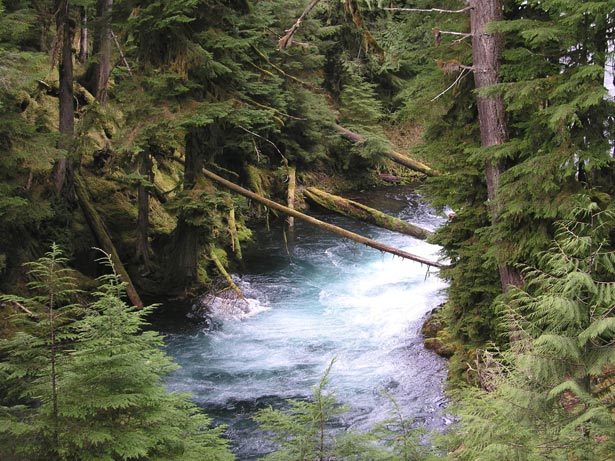
Carbon Sequestration & the O&C Trust Bill
Oregon Wild, Cascadia Wildlands and others have long argued that big trees are worth more left standing. Logging the trees on O&C lands will actually affect climate change. Trees on federal lands have among the highest ability to grab carbon dioxide out of the air and hold it, economist Ernie Niemi says. According to Doug Heiken of Oregon Wild, “If we conserve our public forests, they will remove carbon from the atmosphere, grow for hundreds of years and store additional carbon. If we log them, we will stop photosynthesis and accelerate the transfer of carbon from the forest to the atmosphere.”
Niemi says that scientists at Oregon State looked at two scenarios: What happens to the carbon on these lands through the end of the century under industrial logging, as it’s being proposed, versus leaving the trees standing. Under industrial logging, the carbon plunges and eventually comes back up as trees are replanted and grow. Niemi says the difference between cutting trees and saving them is 4 tons of carbon dioxide per year over the next 85 years.
So what is the damage of cutting and carbon on climate change? Niemi says it’s $1,000 per acre per year for 85 years. That’s a cost of $85,000 per acre for carbon alone.
>$10,000 estimated timber value
Stream Buffers
Stream, aka riparian, buffers are areas along streams where trees and vegitation are left in order to protect the streams, water and fish in them. Currently federal buffers under the Northwest Forest Plan (NWFP) provide the largest buffers — typically 340 feet for fish-bearing streams and 170 feet for non-fish-bearing streams. Thinning is allowed if ecologically necessary.
According to Oregon Wild, under the Oregon Forest Practices Act, which governs private industrial logging, small intermittent headwater streams receive no protection. There are 20-foot no-cut buffers on fish-bearing streams, with some logging allowed from 20-100 feet. Small, non-fish-bearing streams may have a 0-to-20-foot tree buffer, with some logging allowed between 20 and 70 feet. Non-fish-bearing streams are still sometimes streams that contribute to drinking water.
In response to concerns about water and stream buffers, DeFazio called for increasing the size of the buffers on the streams. Citing research out of Oregon State, DeFazio’s increase is not as large as the current NWFP buffers.
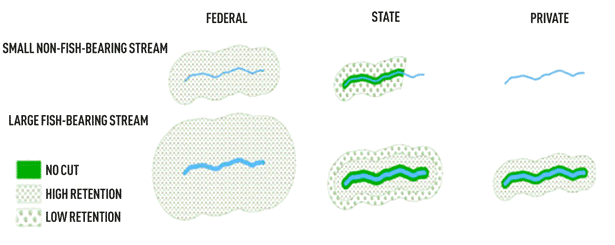
4,250 jobs (Oregon average monthly job growth Jan – May ‘13) > 3,000 jobs (estimated timber industry jobs to be added from O&C Bill)
The Economics of the O&C Trust Bill
The idea behind the O&C bill is that it would generate logs for mill owners, timber jobs for rural, timber-dependent communities and timber revenue for the counties. But Ernie Niemi of Natural Resource Economics says there are costs for the rest of us in this bill. Niemi has been presenting his analysis, along with Oregon Wild, Cascadia Wildlands and private landowners at O&C forest forums.
He says estimates show that the O&C bill would create about 3,000 new timber industry jobs. But the rest of the economy in Oregon has already generated more than 4,000 jobs a month in 2013, and, he says, the logging puts other jobs at risk — jobs in recreation and fishing, for example. “Are we going to have fishing jobs or stump jobs?” he asks. He says if we lose salmon in this region it’s a cost of about $1,000 a fish: “Those are pricy little suckers.”
Logging also affects quality of life, according to Niemi, and there is a cost associated with that as well. He says state research shows that people come here — even take paycuts — for the quality of life. “People don’t come here to live next to stumps,” he says. Some of the areas that would be logged — and possibly pesticide sprayed — border organic farms and private homes.
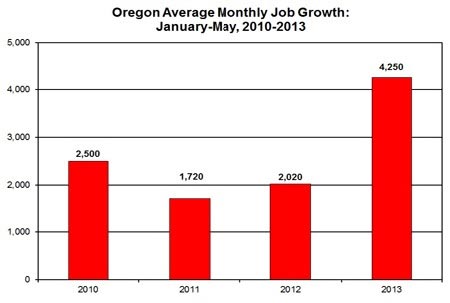
There is also a “cleanup” tax to logging, he says. Logging affects water quality and O&C lands are home to the drinking water supplies of 81 communities and 1.8 million people, according to David Moryc of American Rivers. Logging also harms threatened and endangered species (including salmon), causes flooding and landslides, at a cost to homeowners, and could expose people, fish and wildlife to pesticides that normally aren’t used on federal lands, but are allowed under the Oregon Forest Practices Act.
According to Niemi, his analysis “shows that the estimate of the conservation-related values exceeds the estimate of the timber value by such a large degree that it is clear the O&C lands would be more valuable left unlogged than logged.” His analysis found that conservation-related goods and services on these acres were worth 10 to 20 times more than the timber value on these lands.
Doug Heiken of Oregon Wild says, “Counties have been getting very generous payments from Congress. There is no way to replace that money with logging.” He adds that “if the DeFazio bill is adopted it will mean a huge increase in controversial logging, while the counties suffer a huge decrease in county revenue. It’s a lose-lose for the public and a win for the timber industry.”
81 communities ≈ 1.8 million Oregonians.
Drinking water supplies are derived from O&C lands.